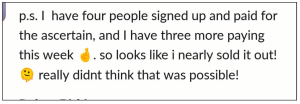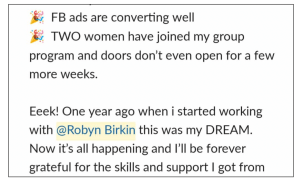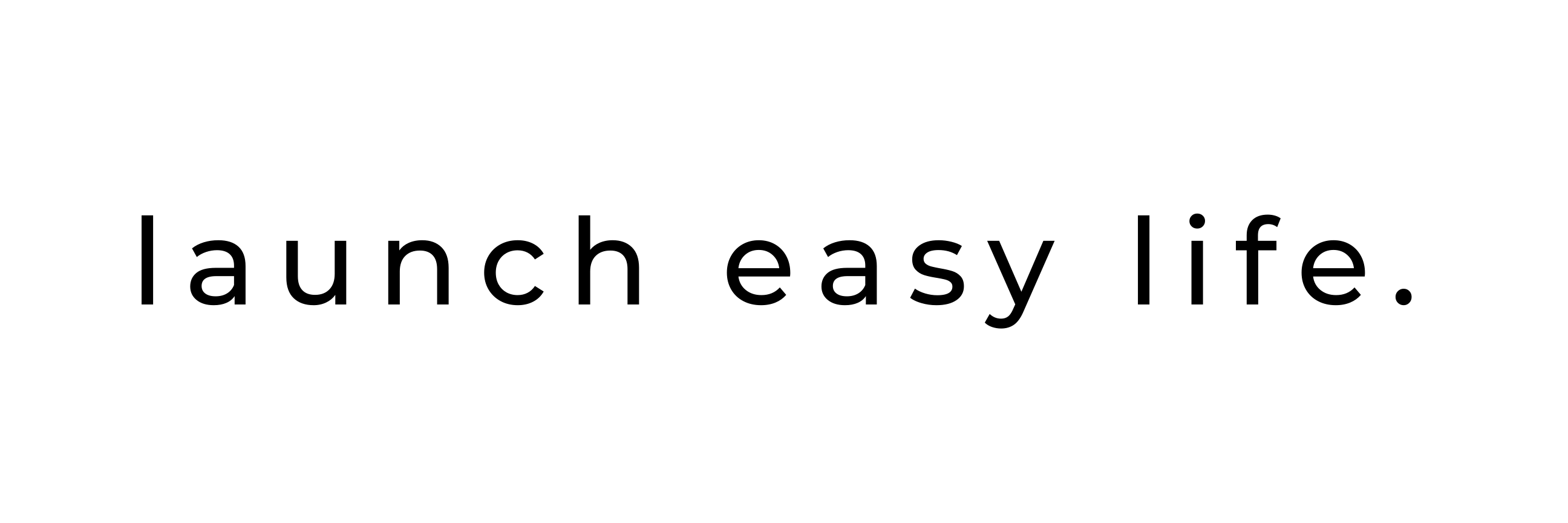Creators who earn six figures say their top revenue-driving product is online courses. Courses can be incredibly profitable, but only if you know how to market an online course effectively.
Over the years, I’ve helped dozens of women with online businesses create, sell, and grow their online courses. I helped one client, Revie Jane, sell hundreds of places during her first launch. I helped another client, Jessica, make sales with no email list and just 87 followers on Instagram. Whether you have a big or a large audience, I’ll share all of my best secrets for marketing an online course that actually sells.
There are many strategies for marketing a course, including creating a lead magnet, email marketing, podcasting, and blogging. Below, I’ll discuss how you can market your online course to help you have a six-figure launch. You’ll also learn the exact methods I teach my clients and hear their personal success stories.
Before creating your course
Before you even create your course, it’s crucial to ascertain demand – or check that your course is a product people want and that it will sell.
If you try to create your entire online course before knowing what will sell, you run the risk of potentially investing a significant amount of time in a product that isn’t sellable.
If you’ve already created your course, the course marketing strategies below can still be helpful for you.
To ascertain demand and get your audience to put their hands up with their wallets, I recommend the following steps:
- Determine the specific transformation your course can offer or the problem it can solve.
- Create a very rough outline (you’ll tweak this later) for the modules you’d like to create. Remember that less is more because people (your course takers) have limited time.
- Decide on a price and offer details (i.e., how you’re going to package and message the course),
- Go to market with a handraiser email or post to sell your course to a few beta testers to help you ascertain demand and get feedback and testimonials as you create your course. If your audience is particularly small or nonexistent, you can use your personal social media or reach out to people you know who might benefit from your resource.


Effective strategies for marketing an online course
Once you have a course idea that’ll sell, you can start creating and marketing it.
Below, I’ll share the online course marketing strategies I’ve used and taught clients to run a successful launch and make sales.
I recommend using these in the order below as you create and launch your course. However, if you already have your course prepared and/or launched, you can fill in the gaps as you see best fit. Feel free to reach out if you’d like my support.
Go through your launch timeline
Your launch timeline plays a significant role in your marketing process. Each phase of the timeline includes different strategies for marketing an online course, including pre-launching to build your audience up, having a breakthrough conversion event, and opening your cart.
I recommend a 90-day launch cycle and live launching for several rounds before going evergreen. This will help you test out all parts of your funnel and ensure you have a good conversion rate.
The three stages of the launch process, which I call an All-Out Launch, include:
- Breakthrough buildup (40 to 60 days) – Create a lead magnet, build and nurture your email list, grow your launch waitlist, and create content that teases your course and helps your audience feel understood.
- Breakthrough conversion event promotion (14 days) – Promote and lead a live event that helps you rapidly build trust and authority and share your course details. Your event might be a webinar, a 3-day challenge, a paid workshop series, or a free trial.
- Cart open (14 days) – The first day is when you’ll hold your conversion event, and then you’ll spend about two weeks selling your program. Share your marketing message with your audience, run ads, and have conversations with warm leads to make as many sales as possible.

The following strategies for marketing an online course can be used during your launch – and beyond when you launch your course in the future or go evergreen.
Nail your sales page
Your course sales page (or landing page) can make or break your launch, so it’s essential to make it really good.
The most successful sales pages include the following:
- Attention-grabbing headline – Likely your course name and should clearly tell what the course covers
- Supporting subheadline – A brief description of the problem your target audience is facing and what the course will help them achieve
- Call to action – A button that stands out and leads people to the cart or purchase page
- Video(s) – A course introduction and/or a testimonial from a beta tester (38.6% of marketers say video is the leading impact for conversion)
- Benefits – The information that tells your audience what they’ll get out of the course and why it’s right for them
- Social proof – Written and/or video reviews from course takers and results people have achieved
- FAQs – Answers to questions that might hold people back from purchasing
Build your audience
Building an audience is critical to marketing and selling an online course. You can build your audience using social media, email marketing, podcasting, blogging, or any other method that helps you connect with people.
Keep in mind that you don’t need a huge audience for a successful course launch. In fact, one of the biggest mistakes I see online business owners make is waiting until they have a large audience before creating and marketing an online course.
The best part is you can successfully market and sell your online course while still growing your audience, just like many of my clients have.
Create a lead magnet
A lead magnet is a free resource, often referred to as a “freebie,” that gives a preview of what people can learn from you. It should be educational and give people a quick win–something that makes them think: “Wow, if this was free, I wonder what the paid course will give me!”
Your lead magnet can be any free resource, including a PDF guide, ebook, or recorded webinar. For example, my 16-hour CEO freebie is a complete guide to how I set up my schedule to run a successful business in only 16 hours per week. The goal is to help service providers and course creators create their own life-first and wildly fulfilling business, which is also what my paid offers help with.
After you create your freebie, you can promote it on social media, your website, or any other place where you market your offers. This will help you build your email list to help you make sales during your course launch and beyond when you’re ready to go evergreen.
Send emails to your list
Email marketing is one of the leading channels for return on investment because email subscribers are often warm leads who trust you enough to buy. If you have an email list before you launch your course, you can send emails during your launch period. If not, that’s okay – you can start now.
You can create a series of emails about your course to encourage sales, which lets you share what’s in your course, who it’s for, testimonials, etc. You might also share a coupon code for a limited time to encourage sales.
For a 14-day launch, I recommend sending approximately 10 emails – excluding your conversion event promotional emails and replay videos. This will look like an email every second day and four to five emails spread over the last two days of your launch.
Implement a content marketing strategy
Content marketing is a leading marketing strategy because it helps you reach, connect with, and build trust with your target audience. In my experience as a business owner, it’s also one of the best ways to build traffic and email sign-ups for successful launches.
You should be creating content at all stages of your business, but it can be especially helpful for marketing during and after your launch. For example, you can write blogs, create YouTube videos, make social media posts, or record podcast episodes. All of these can cover helpful content related to your course and lead people to your sales page.
Guest podcast
If you don’t want to host your own podcast (or even if you do!), you can also be a guest on one. Ideally, you’ll want to get on podcasts with an audience similar to yours.
As a podcast guest, you can discuss a topic related to your course. Most podcast hosts will also let you promote your offers to their listeners and include your link(s) in their show notes.
Optimize your website for SEO
Many course creators wonder if having a website is worth it. While it’s not a necessity, it can be incredibly helpful for marketing an online course. In fact, 58% of people say a branded website helps build trust.
Not only can a website help you show up as an authority, but it can also let you implement a search engine optimization (SEO) strategy. With SEO, you use techniques to help you show up on Google. In other words, if you have an SEO-friendly website, you can rank on Google so that your target audience can find you on Google.
A crucial part of SEO is writing blog articles focusing on topics/keywords your target audience searches on Google. This helps you reach the right people, who can then land on your website and discover your content and offers. For example, my blog includes helpful content for service providers and course creators.
Create an affiliate program
An affiliate program can encourage people to market your online course for you in exchange for a commission. This can work very well because 92% of consumers trust recommendations from people they know.
With an affiliate program, you can give your course takers a special link to share with others. Then, they’ll receive a payment when someone purchases your course through their link.
You can choose any commission amount for your affiliate program – either a percentage of the sale or a specific dollar amount.
Host a webinar
A webinar is a unique way to sell courses because many course creators don’t do it, so it feels special to potential course takers.
During a webinar, you can share helpful tips and answer questions about your course topic. The goal is to show up as a topic authority, establish a connection, and encourage listeners to buy your course for more.
At the end of your webinar, you can share your course link and offer a limited-time sale. You can also follow up with a thank you email with your course link, sale information, and invitation to ask further questions if needed.
One of my favorite softwares for webinars is Kartra because it’s easy to use and offers many other helpful features for course creators, including a landing page builder and email marketing automation.
Participate in speaking opportunities
Like webinars, speaking opportunities allow you to talk with a group of people. You can speak for an online mastermind group or, if you like networking in person, you could speak at local events or other engagements.
Get to know other entrepreneurs online or in your area to learn about or pitch possible speaking engagements. As you network and grow your personal brand, more opportunities should naturally present themselves.
Additional resources for marketing an online course
For more on how to have a successful course launch and create an online business you love, you might find these resources helpful:
- Email Leads Case Study – A full behind-the-scenes look at the Easy Funnel Fuel Strategy we used to get 1,500 email subscribers and launch-ready leads in three weeks
- Signature Online Course Secrets – My podcast for female coaches, consultants, and service providers who want to grow and scale a profitable, part-time business
- Peace + Profit Mastermind – A 6-month program for established female service providers and course creators ready to double their revenue while working 20 hours or less per week
